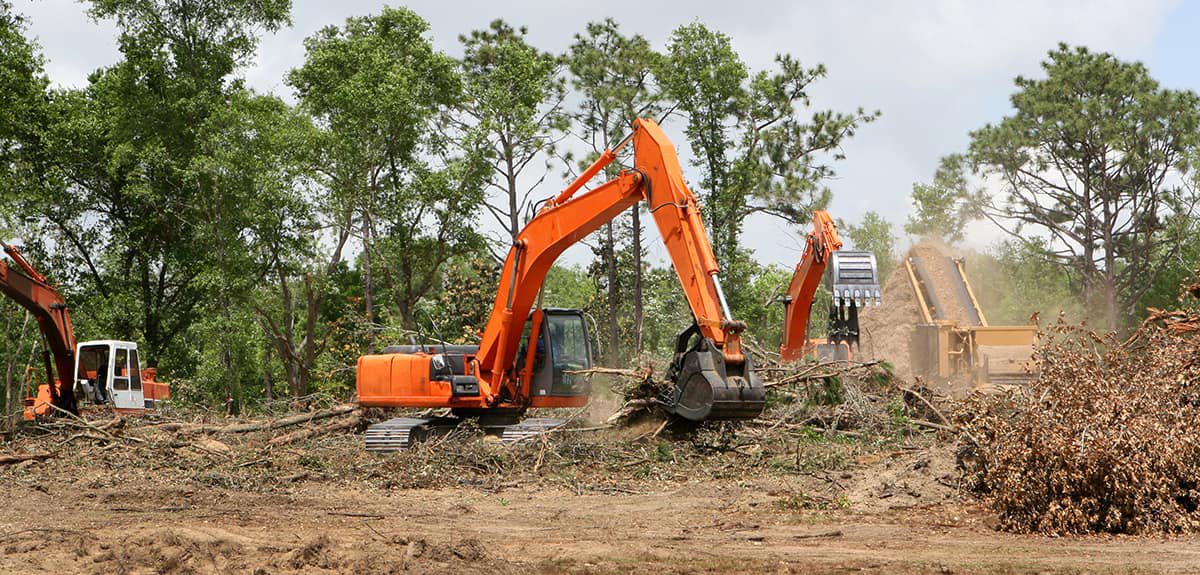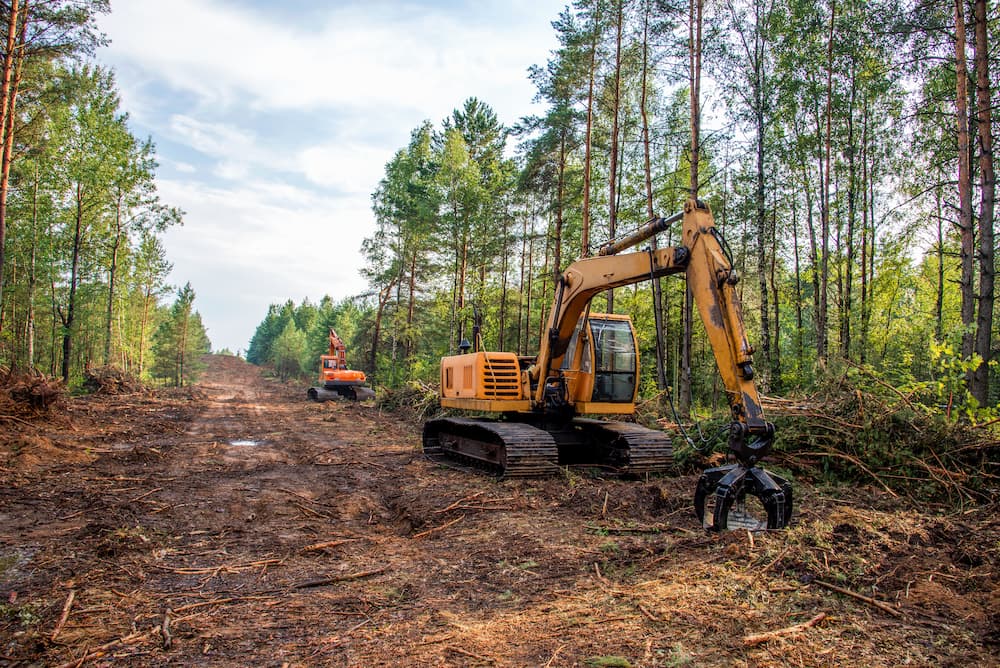Lasting Land Clearing Practices for a Greener Environment
In the world of environmental conservation, the technique of lasting land clearing up stands as a pivotal factor of conversation. As we browse the delicate equilibrium between advancement and preservation, the approaches used in clearing land hold considerable weight in forming the future of our ecological communities. By taking on environment-friendly strategies, prioritizing biodiversity conservation, and participating in area education and learning, a path towards a greener atmosphere starts to arise. The intricate dance between development and sustainability in land cleaning techniques introduces a world of opportunities that beckon for expedition and implementation.
Value of Sustainable Land Cleaning
The significance of carrying out sustainable land clearing up practices hinges on the preservation of ecological communities and the upkeep of ecological honesty. When land is removed unsustainably, it can lead to irreparable damage to the atmosphere, leading to dirt erosion, loss of biodiversity, and interruption of all-natural environments. By embracing lasting methods such as discerning clearing up, reforestation, and disintegration control procedures, we can reduce these unfavorable impacts and ensure the long-lasting health of our environments.

Additionally, lasting land cleaning techniques promote accountable land monitoring and sustain the resources of local communities. By guaranteeing that land is gotten rid of in such a way that is socially responsible and environmentally friendly, we can create a much more sustainable future for all.
Eco-Friendly Clearing Up Techniques

An additional reliable approach is the use of regulated burns. By thoroughly executing and planning recommended burns, land managers can get rid of greenery in a controlled fashion, minimizing the danger of wildfires and advertising the development of fire-adapted plant varieties. Managed burns additionally help recycle nutrients back right into the dirt, promoting brand-new development and maintaining environment health and wellness.
Moreover, making use of mechanical tools with low ground pressure, such as tracked lorries or specialized forestry mulchers, can decrease dirt compaction and damage to underlying plant life. These equipments are created to operate with precision, precisely removing undesirable plant life while protecting the bordering atmosphere. By integrating these eco-friendly clearing up techniques, land cleaning operations can support biodiversity, conserve natural sources, and contribute to a greener, a lot more sustainable future.
Biodiversity Preservation Techniques
Integrating green land clearing up strategies not only decreases ecological effect but additionally plays a crucial role in promoting biodiversity conservation approaches. When clearing land, it is essential to take into consideration the influence on regional vegetation and fauna. One reliable approach for biodiversity conservation throughout land clearing up is the application of careful clearing up techniques.

Lasting Machinery and Tools
To lessen ecological impact More Bonuses and enhance performance in land clearing techniques, utilizing lasting equipment and tools is paramount. Sustainable machinery and tools describe devices specifically designed to minimize discharges, minimize soil compaction, and reduced fuel intake throughout land clearing tasks. Executing technologies such as low-emission engines, hybrid systems, and accuracy tools can considerably decrease the carbon impact connected with land clearing operations.
One instance of sustainable equipment is the use of mulchers or chippers that can refine vegetation on-site, minimizing the need for burning or transporting away particles - Legendary Demolition Seattle. Furthermore, employing equipment with GPS innovation can help in precise preparation and execution of land clearing up tasks, lessening unneeded disruption to bordering communities
Routine upkeep and appropriate devices sizing are likewise essential components of lasting land clearing up practices. Ensuring that equipment is properly maintained not just lengthens its life-span however additionally maximizes its performance, bring about much more efficient and eco-friendly land cleaning procedures. By focusing on the usage of sustainable equipment and equipment, land clearing activities can be executed with minimal effect on the setting, fostering a greener and even more read here sustainable future.
Area Interaction and Education
Engaging the neighborhood neighborhood and supplying academic sources are necessary parts of advertising lasting land cleaning techniques. Neighborhood involvement fosters a feeling of common responsibility and ownership over land administration choices, bring about more lasting end results. By involving community members in the planning process, their expertise and point of views can be incorporated, leading to services that are culturally sensitive and eco sound.
Educational sources play an important function in equipping individuals with the understanding and skills required to take on lasting land clearing up practices. Workshops, training sessions, and educational products can help neighborhood participants recognize the significance of biodiversity conservation, soil health, and water quality in the context of land clearing activities. By elevating understanding about the possible environmental effects of inappropriate land clearing up techniques, academic campaigns can drive behavior adjustment and urge the fostering of even more sustainable choices.
Ultimately, community engagement and education develop a foundation for long-lasting ecological stewardship, ensuring that land cleaning activities are carried out in a fashion that preserves environments and advertises the well-being of both individuals and the earth.
Conclusion
To conclude, sustainable land clearing practices are important for advertising and more info here preserving the environment biodiversity. By making use of environmentally friendly methods, preserving biodiversity, making use of sustainable machinery, and involving with neighborhoods, we can guarantee that land clearing tasks have minimal unfavorable effect on the environment. It is important that we focus on lasting methods to shield our atmosphere for future generations.
By incorporating these environmentally friendly cleaning techniques, land clearing procedures can support biodiversity, save all-natural resources, and add to a greener, more sustainable future.
One reliable method for biodiversity conservation throughout land clearing up is the execution of careful clearing techniques. By prioritizing the usage of lasting equipment and devices, land clearing activities can be carried out with minimal effect on the environment, promoting a greener and more lasting future.
In verdict, lasting land clearing up techniques are important for protecting the setting and promoting biodiversity. By using green strategies, preserving biodiversity, using sustainable equipment, and engaging with communities, we can make sure that land clearing up tasks have very little negative effect on the environment.